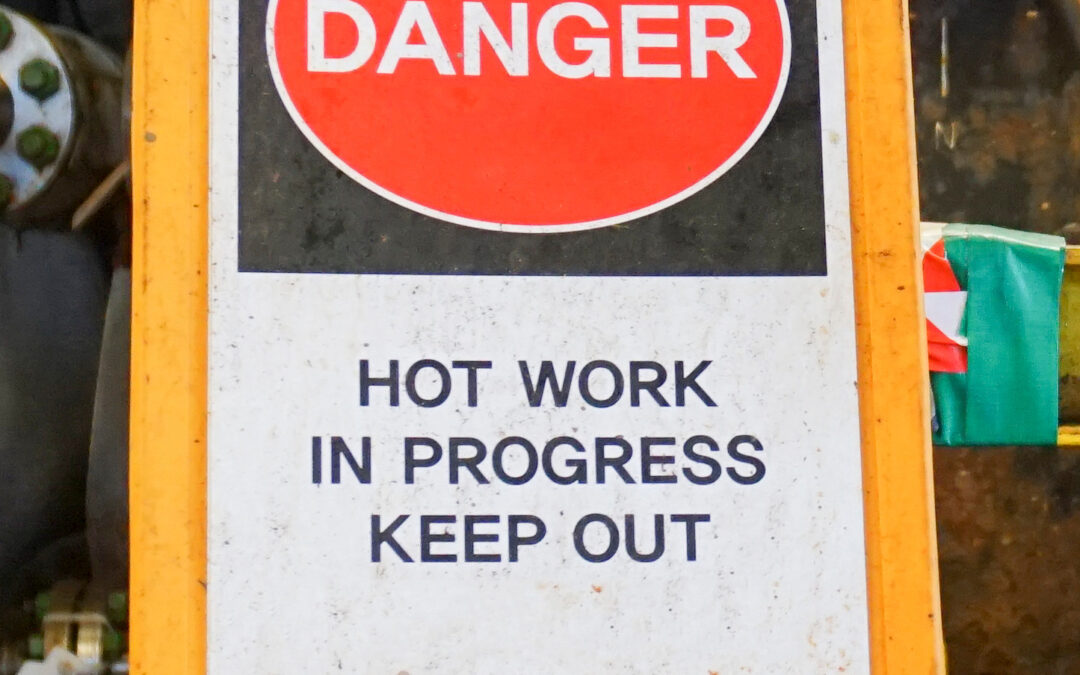Many industries require hot work as part of routine work activities. “Hot work” refers to any work requiring open flames, applying heat or friction, or generating heat or sparks. Hot work can create hazardous conditions that may pose a risk to workers. Flying sparks are the main risk, especially in areas where there are flammable or combustible materials. According to the National Fire Protection Association (NFPA), “U.S. fire departments respond to more than 4,000 structure fires per year involving hot work. These fires cause hundreds of injuries and millions of dollars in direct property damage per year.” Whenever possible, tasks involving hot work, including cutting, welding, brazing, soldering, grinding, and drilling should be performed in a designated area approved for hot work operations.
Discussion Points:
• What is Hot Work?
• Special Control Measures
• Hot Work Permits
• Professional Protective Equipment
• Training and Certification
Discussion:
According to OSHA Standard 1917.152, special control measures are necessary to perform hot work safely. These include obtaining a hot work permit, preparing the work area, providing appropriate Personal Protective Equipment (PPE), and ensuring all workers and supervisors receive adequate training. Hot work permits are required when tasks involve tools and equipment that use open flames and heat, and generate sparks. The permit will ensure that workers understand their responsibilities and the work does not proceed without proper authorization and safety procedures. Before beginning any hot work tasks, prepare the work area. Remove all empty drums and containers, and securely close all containers that contain fluids. Keep area clean of combustible and flammable material. Floors may be covered with damp sand. Ensure the atmosphere is free of fumes and vapors that can start a fire or create an explosion. Use sufficient exhaust ventilation to remove contaminants. Inspect equipment for loose connections and defective parts, and make sure all equipment is properly grounded and working efficiently. Fire extinguishers, and fire prevention equipment and materials should be available for immediate use. Workers must wear appropriate PPE. This includes helmets, welding hoods, face shields, gloves, aprons, leather vests, leggings, safety boots, ear protection, and respiratory protective equipment. They should wear cotton or denim clothing and avoid clothing made of synthetic materials. Workers must understand fire safety procedures, how to activate alarms, the evacuation route in case of an emergency, and how to contact fire authorities. They should learn first aid techniques for burns, eye injuries, poison inhalation, and shock. Workers should know the location of safety eyewash and shower stations and understand how to use them. The NFPA offers Certificate Training Programs for workers requiring hot work certification.
As always, stay safe out there!


Recent Comments